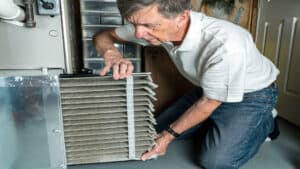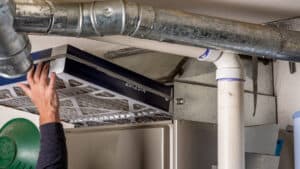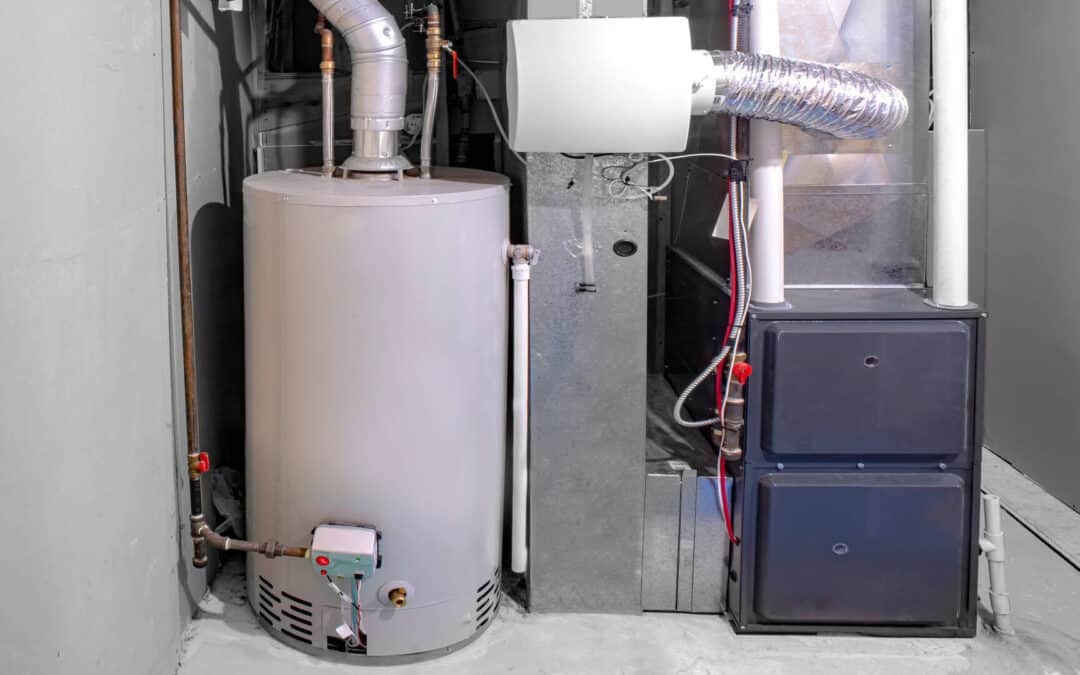Winter is fast approaching—the season when homeowners strive to keep their homes warm. One way they do this is by using a furnace. And because this heating equipment is vital during winter, a homeowner must conduct furnace maintenance and avoid taking it for granted. It’s crucial to do this as it allows the HVAC equipment to maintain proper heat inside the house without any issues. Moreover, it prolongs the lifespan of the equipment.
But how will you go about this process? Besides calling a professional contractor for regular maintenance, there are upkeeping tasks you can do yourself. And if you want to know them, continue reading, as this article will tackle that for you.

1. Checking The Air Intake And Exhaust Pipes
One of the crucial components of a gas-powered furnace is the exhaust pipe or vent. Though it doesn’t take part in the primary equipment operations, your furnace couldn’t simply function if it didn’t exist. The reason is that exhaust pipes are a channel for removing the furnace’s exhaust gases from your home’s interior, away from your loved ones.
Likewise, the furnace’s air intake is just as essential. An air intake allows the outdoor air to enter the house. It leads to better indoor air quality along with removing excess moisture.
For such reasons, you must check your outdoor furnace vents and air intake during furnace maintenance. You have to do this, especially during winter, to avoid or remove any clogs that may damage your furnace. But how will you go about this? Some steps that you can take to check the furnace’s air intake and exhaust pipes are:
- First, find the location of your furnace. After that, search where the air intake and exhaust pipes are outside your home. Usually, these two components are placed near the area where the furnace is found inside.
- After finding the air intake and exhaust pipes, check if they are positioned correctly. The exhaust pipe should point upwards, while the air intake should point downwards. Checking if they’re pointing in the right direction is crucial since an air intake above the exhaust pipes may indicate that it’s taking exhaust gases back into your property.
- The next step is to ensure a minimum clearance of five feet around the exhaust pipes and air intake.
- After that, you can check if there is something that is blocking the airflow of the pipes. If there is, then you should remove it.
However, if you think you can’t do these tasks alone, hiring a professional can help.

2. Changing The Furnace Filter
A furnace has a filter to trap dirt, dust, and other airborne particulates. They prevent such particulates from reaching the heating system and possibly causing damage to the furnace fan or the heating coil. You can opt for more costly filters, which could improve your house’s air quality by trapping pollen, mold spores, bacteria, and mildew.
Because this filter is essential to your furnace, you must know when to change them. That way, they can continue to keep your home’s indoor air quality clean. Also, it will enable you to keep your furnace efficient. But how will you know the ideal time for replacing your filter? For one, you must inspect your furnace filter monthly to see if you need to replace it.
Likewise, here are some specific steps to follow to replace your old furnace filter:
- Turn off the furnace and take out the current filter. You can find the filter within the furnace or air return vent.
- After that, identify the filter size you need using a tape measure to know what to purchase.
- The next step is to know where to buy the filter. Usually, the filter can be purchased online, at hardware stores, or home stores.
- The fourth step is to start replacing the old filter. When doing this step, notice the markings indicating what side of the filter should face the heating equipment.
- After that, slide the filter into the furnace and place the cover back again. Likewise, consider the date you conducted the filter change so that you’ll know the right time to replace it again.
Replacing the filter is that simple, and any homeowner can do it.

3. Inspecting For Furnace Leaks
A furnace leak can be incredibly hazardous to your health, and as a homeowner, it’s your task to avoid it. One way to do this is to check the furnace pipes. You can examine if there are small holes that might leak gases.
Another way to check if there are leaks is to determine if the furnace releases a sulfur-like smell. Such a smell exists because natural gas and propane used in a furnace are added with mercaptan. Mercaptan is the one that emits this smell.
The third step to assessing if your furnace has leaked is when you notice a hissing sound. This sound can lead you to the leak source. But if you don’t hear this noise or the sound isn’t noticeable, another two steps to take are to:
- Mix a tablespoon of dish soap in a cup of water.
- Spray it on the furnace pipes and check for bubbles that are a sign of a gas leak.
Generally, these two steps are what gas professionals do to check for leaks.
Wrapping Up
Conducting proper furnace maintenance is crucial. For one, it keeps the furnace in good condition for a long time. Second, you can have warmth inside the house during winter without stressing about possible issues with your furnace.
As furnace maintenance is vital, you, as a homeowner, should conduct this regularly. There are some maintenance activities that you can do yourself. For instance, you can check the air intake and exhaust pipes and replace the furnace filter. Doing this can maintain good air quality within your property. Lastly, you can examine if the furnace has gas leaks. Preventing gas leaks in your furnace is crucial to avoid health issues.
If you have found significant issues you may not be capable of fixing after inspecting your furnace, hire a professional.

Recent Comments